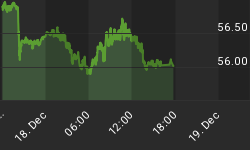"NSA stands for 'No Such Agency'." --- Dan Brown.
When Dan Brown, author of The Da Vinci Code, wrote that only 3% of Americans were aware of the existence of the NSA (National Security Agency) - one of the most influential government organizations in the world that has been gathering global electronic intelligence data for over half a century - in another one of his best-selling thrillers, Digital Fortress, in 1998, most people thought it was just fictional.
Today, many law makers were outraged as they found out for the first time from a New York Times report saying President Bush authorized the NSA to monitor the international phone calls and emails of hundreds and perhaps thousands of people inside the U.S. The interesting thing is that the NSA has been around since 1952.
In Digital Fortress, the NSA's Cryptography Division - an elite group of mathematical talents known as the code-breakers - was equipped with a giant multibillion dollar super code-breaking computer called TRANSLTR. The use of TRANSLTR was to be regulated in much the same way the FBI needed a federal court order to install a wiretap. TRANSLTR was to include programming that called for passwords held in escrow by the Federal Reserve and the Justice Department in order to decipher a file. This would prevent the NSA from listening indiscriminately to the personal communications of law-abiding citizens around the globe.
Perhaps Mr. Brown knows something that none of us do. Otherwise, if someone as brilliant as Mr. Brown believes that the Federal Reserve is a government agency that has the authority over the NSA, then even fewer Americans may be aware of the truth about the Federal Reserve than the NSA. The lack of public awareness sometimes propagates the influence of organizations such as the NSA and the Fed. And, without the proper check-and-balance, they could become the problem instead of the solution.
The problem with the Fed is that it's actually the cause of inflation. According to Principles of Economics by N. Gregory Mankiw, Professor of Economics at Harvard:
-
The velocity of money (V) is relatively stable over time.
-
Because V is stable, when the Fed changes the quantity of money (M), it causes proportionate changes in the nominal value of output (P x Y).
-
The economy's output of goods and services (Y) is primarily determined by the factors of production and technology and this output is not affected by M.
-
If M increase more rapidly than Y, then prices rise.
-
So the Fed is the cause of inflation.
In the above analysis, P stands for Price, or the dollar value. Just to keep it simple, we won't get into further discussion about Prof. Mankiw's equations. However, for those of you interested:
-
V = (P * Y)/M
-
M * V = P * Y
And, the problem may get much worse yet. Despite everyone's focus on the missing word, accommodative, I'm more concerned about the following changes in the latest FOMC statement. Perhaps I'm reading too much into it, but I thought the important part of the Fed's statement change last Tuesday was from this:
The Committee perceives that, with appropriate monetary policy action, the upside and downside risks to the attainment of both sustainable growth and price stability should be kept roughly equal.
To this:
The Committee judges that some further measured policy firming is likely to be needed to keep the risks to the attainment of both sustainable economic growth and price stability roughly in balance.
It's a mountain of difference between keeping the growth and the price stability EQUAL and IN BALANCE. EQUAL is more objective than IN BALANCE. When the price and the growth are kept roughly equal, we know they're kept approximately the same. This means the Fed's endeavoring in keeping the price and the economy increasing at about the same pace. However, if they're kept roughly in balance, then who knows what that balance may be.
I think it's rather ominous that the Fed may be fighting a losing battle of trying to keep the price level contained and the economy growing consistently at the same time. And, the Fed is fully aware of this by now. It's not all that difficult to see that the economy's slowing down while the cost of living's rising. The Fed may keep its inflation fighter heroic act together by continuing to raise the Fed fund's rate, but it could pump more liquidity into the system by way of money supply increases. The recent announcement of discontinuance of M3 money supply report is quite self evident of the Fed's intent to do so. However, while the influx of liquidity may stimulate the economy, it could also throw off the price stability, hence, the change from equal to in balance.
And, before discontinuing M3 report in March 2006, the Fed appears to have started pumping liquidity again through a lesser known mean to the public, the Fed's Open Market Operations. Chart 1 shows the downtrend of the Fed's daily repo was reversed in the beginning of November. This recent uptrend is rising at a much steeper angle than the previous decline. This means a lot of money at a very rapid pace. And so, you can see where the November stock market rally - the financial sector in particular - came from.

Chart 1
Without proper check-and-balance and public awareness, one person or one small group of people ended up making important decisions for us that may profoundly affect our lives. That's not democracy, and it's certainly not American.
















